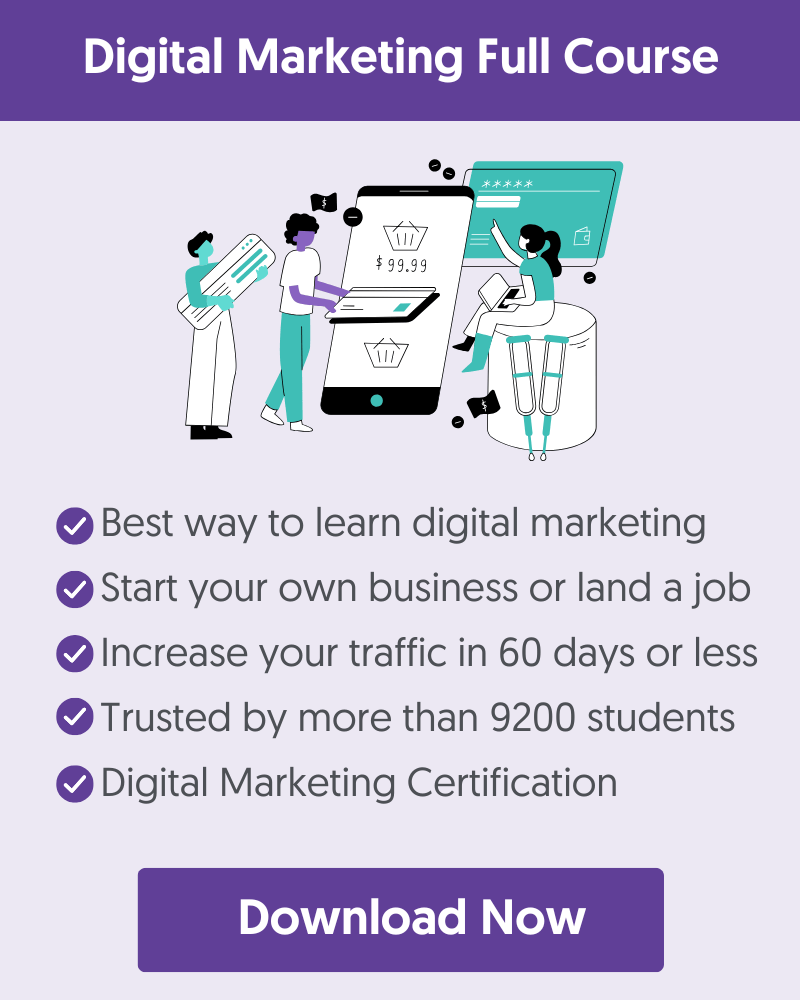- 1. Create a Google Business Profile Listing
- 2. Check Your NAP (Name, Address, Phone Number) Details
- 3. Run Local Link Building Campaigns
- 4. Add Local Business Schema Markup
- 5. Optimize Images For Local SEO
- 6. Review Your Page Title And Meta Tags
- 7. Localize Page URLs
- 8. Publish Related Local Content
- 9. Get Listed in Local Business Directories
- 10. Optimize Your Social Media Business Pages
- 11. Manage Your Online Reputation
- 12. Pursue Brand Mentions From Local Press
- 13. Add a Google Map To Contact Us Page
- 14. Perform An SEO Audit
- 15. Target Local Keywords With Blogging
- Learn More About Local SEO
Local businesses can increase local SEO traffic by utilizing strategies that give them more exposure in Google Search results. Follow our checklist to optimize your website for SEO and gain more customers.
1. Create a Google Business Profile Listing
Creating a Google Business Profile listing is one of the most important SEO factors for Local SEO.
When you create an account with Google Business, Google will verify your address and ownership of the business.
This will be done by sending you a mail with a code to your specified address or by phone (depending on your country).
Once your address is verified, your business will show on Google Maps and be a candidate to show in the local results in the SERPS.
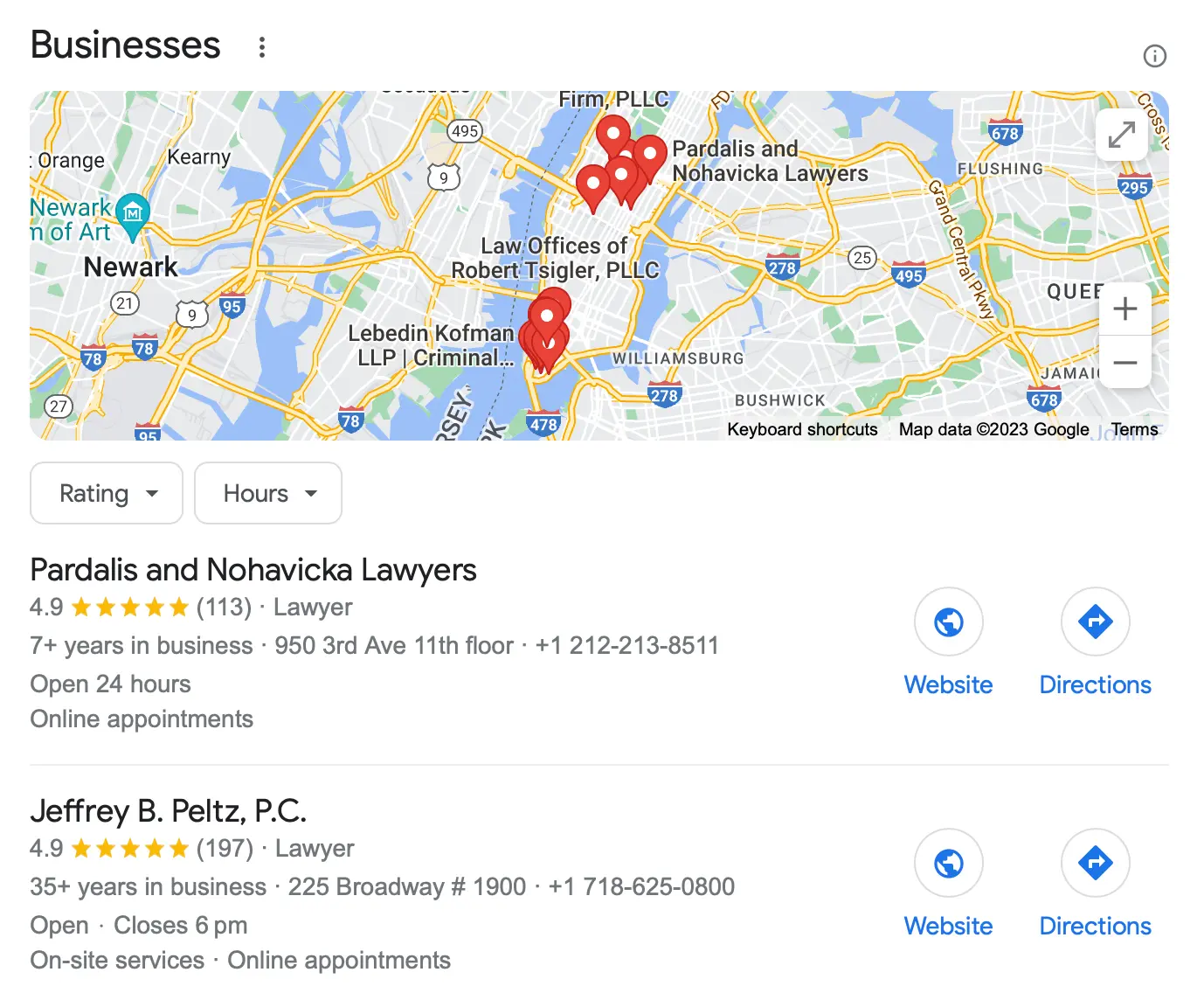
To improve your local ranking on Google, you need to make sure that:
- You choose the most relevant category for your business.
- The data provided for your business (name, address, category) is correct, complete, and accurate.
- Your business' opening hours are correctly set and up-to-date. This is very important because Google shows businesses that are open at the time a user is performing a search for related keywords.
- You respond to every review customers leave about your business (even the bad ones).
- You have added photos of your business (both inside and outside, if applicable) to your Google Business Profile page.
2. Check Your NAP (Name, Address, Phone Number) Details
On your website's homepage, make sure that your NAP details (Business name, street number, postcode, state, country, telephone number, email) are visible as text (not image) in a prominent position.
See below a few examples of good and bad NAP formats.
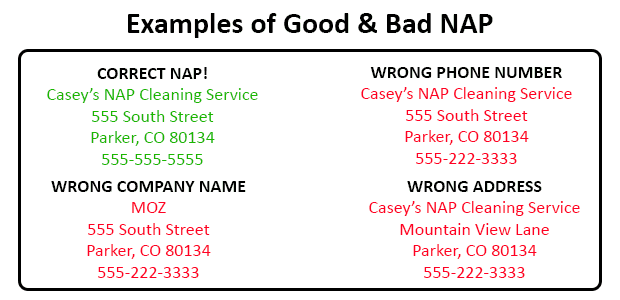
Important: When displaying your phone number, make sure that you use your local number (which includes the area code) and not your toll-free number.
Any signals you can give to Google related to your locality are useful for Local SEO.
You can have the NAP details in the footer for the rest of the pages.
I have separated the home page from the rest of the pages to stress the importance of the contact information being visible on the homepage.
One of the biggest mistakes many people make regarding Local SEO optimization is the inconsistency of NAP information.
Your contact information must be consistent in all channels.
This means that the address and the telephone number you show on the website should be the same as the address you have on Facebook, Google Business Profile page, and any other places your company is listed.
3. Run Local Link Building Campaigns
Local SEO is a subset of ‘general SEO,’ meaning that you must follow good general SEO practices to get better rankings locally.
Link building is a tactic that can greatly impact your SEO efforts, and you should not forget that when optimizing for local searches.
Proving link-worthy content, pursuing natural links, promoting your website to get the attention of others, and optimizing your content for the Google featured snippet are practices that will positively affect your local rankings.
Read our guide on link-building techniques and link-building for SEO for actionable ideas.
4. Add Local Business Schema Markup
Schemas or structured data markup is a way to ‘describe’ your data so that search engine crawlers can understand the context better.
Schema markup is very important for local SEO, and you must implement it to improve your local rankings.
Depending on the type of local business, you should use the appropriate schema.
You can read more information about local business schemas from Google and schema.org.
Here is an example of how the schema looks for a local restaurant. This piece of JSON-LD code should be added to the homepage.
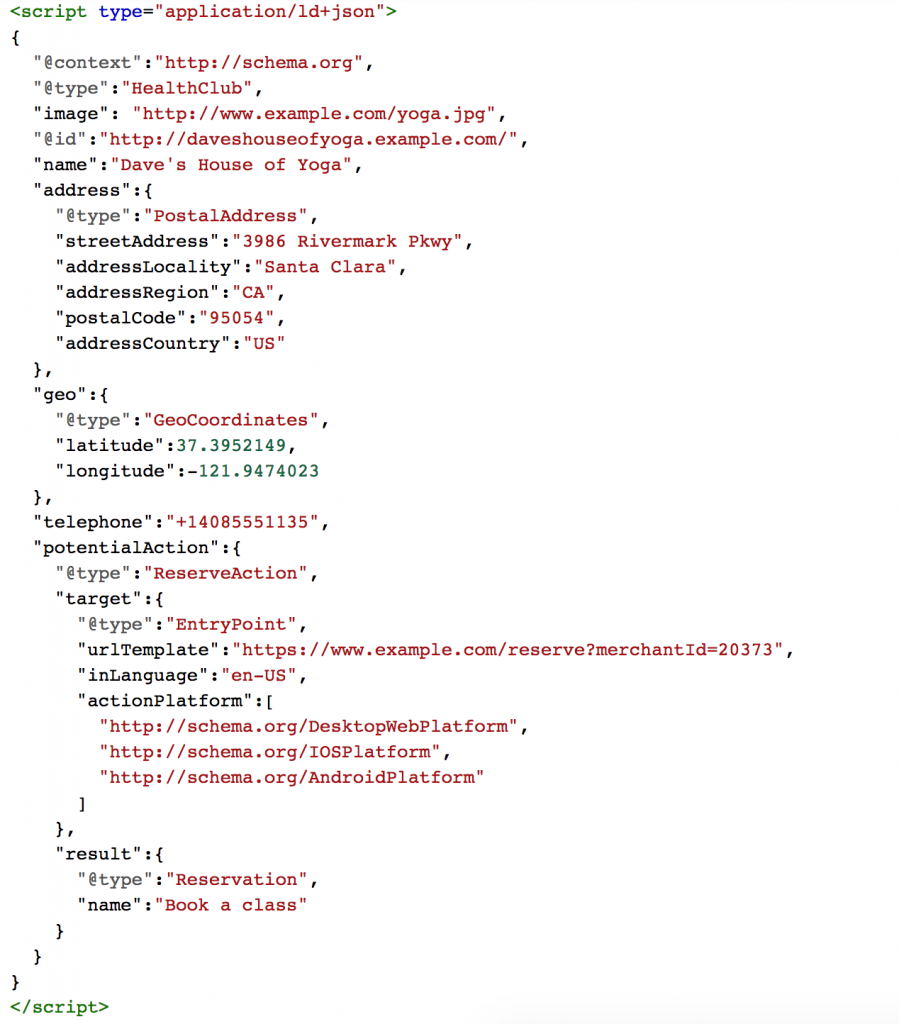
There are various ways to create the markup code for your business. You can use a plugin or Google structured data markup helper tool.
Go to Google Structured Data Markup Helper.
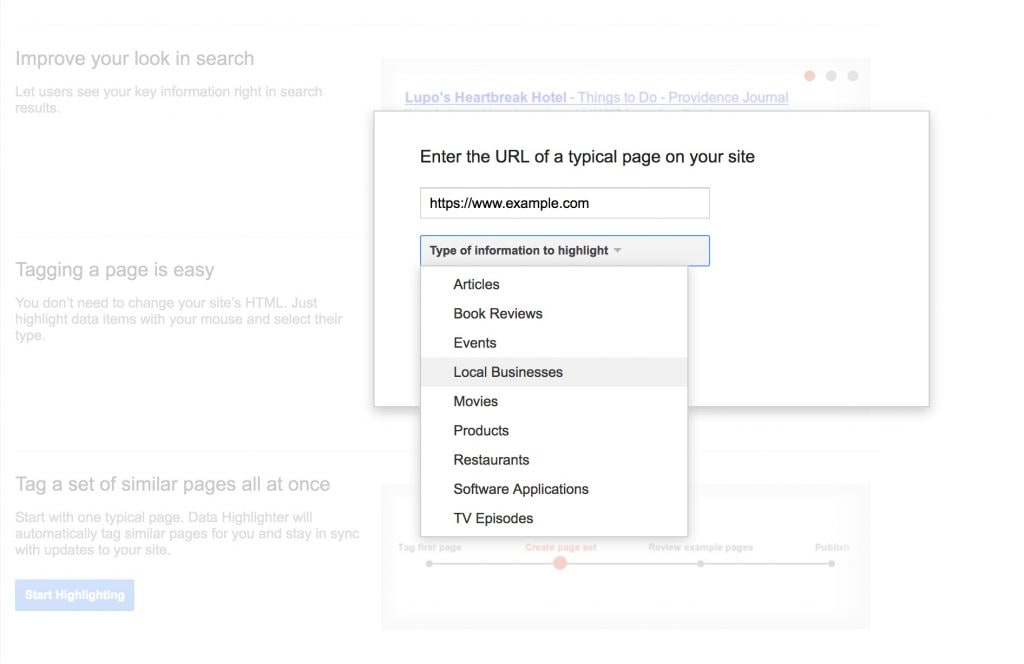
Click the Start Highlighting button, enter your website’s URL, and select LOCAL BUSINESS from the drop-down menu.
Once you are done tagging, the result is a file that matches the requirements definition of local business at schema.org.
You can then download the file, validate it using the Rich Results Testing Tool, and add it to your website.
Another way to create the relevant structured data is to use AI tools like ChatGPT. Go to ChatGPT, and in your prompt, provide the business details and ask for a LocalBusiness JSON-LD script.
Here is the prompt:
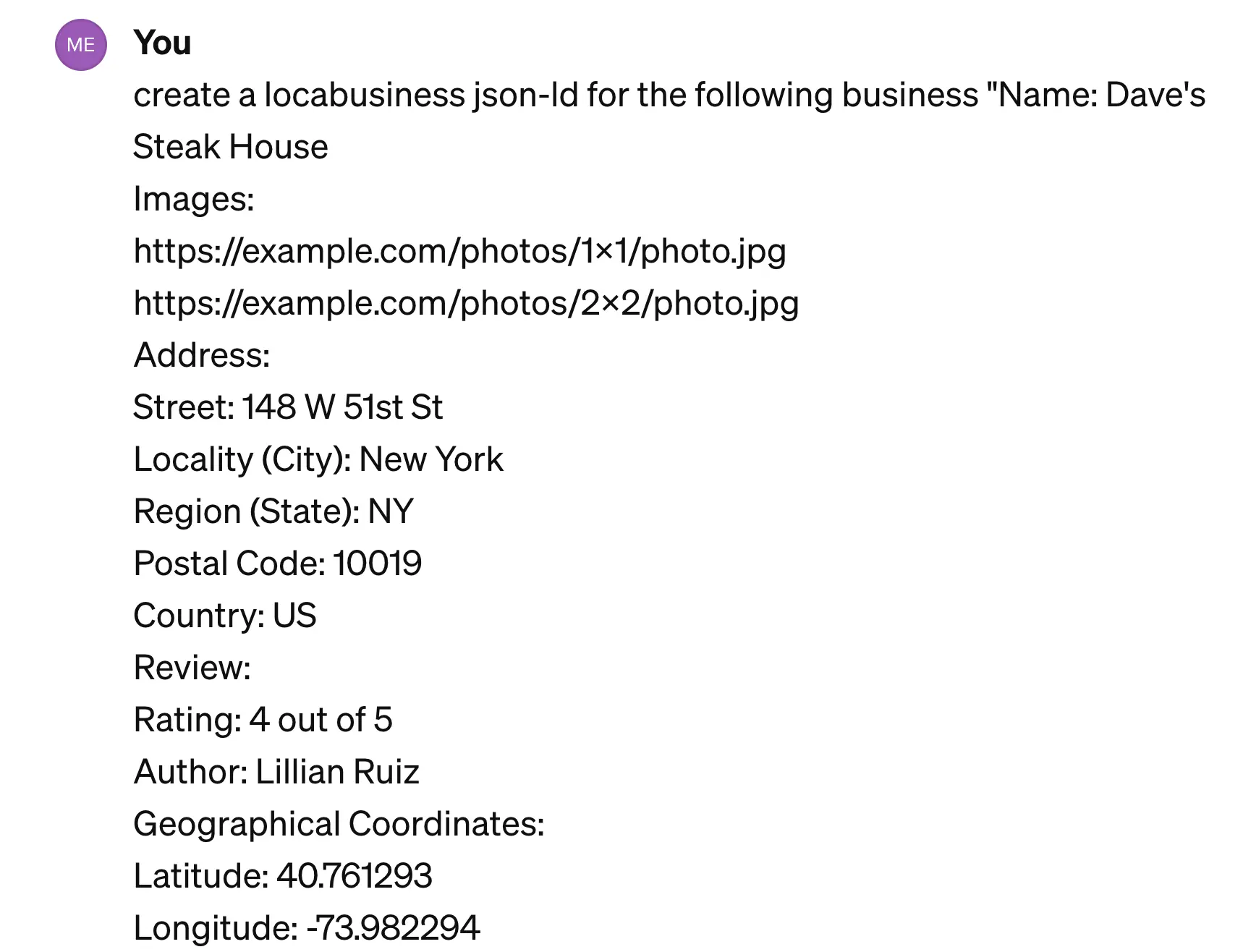
And the generated script.
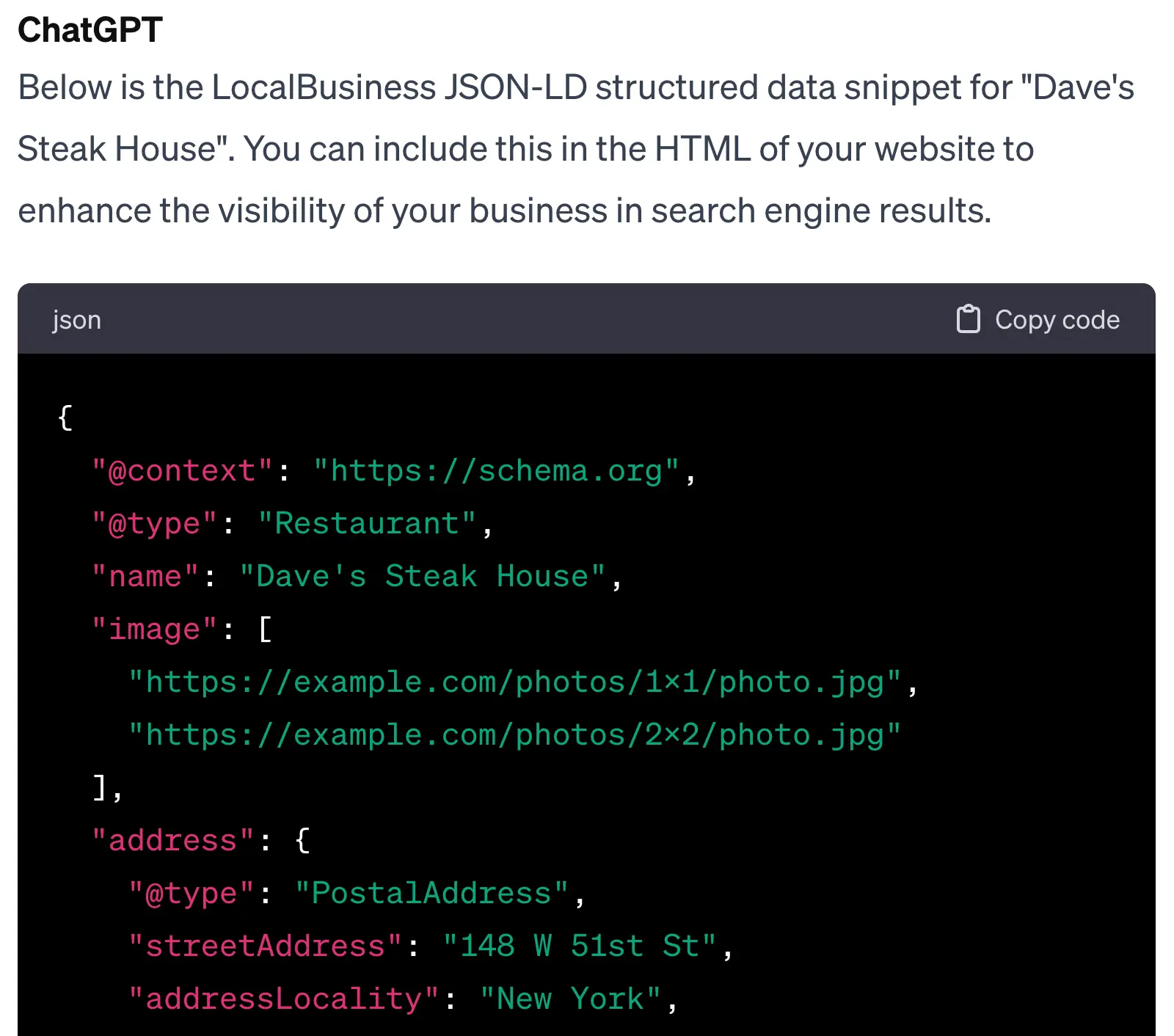
5. Optimize Images For Local SEO
Images are a good place to start your local SEO optimization. Any images used on your website should follow these guidelines:
Use descriptive image filenames - Instead of using headoffice.png, it is better to use a more meaningful filename like ‘mayers-dental-surgeons-head-office-florida.png’
Use optimized Alt text - You can use the ALT text to give more details about the image and, in this case, the location of your business.
For example, you can use ‘Mayers Dental Surgeons, Florida’ as the ALT text.
<img src=”http://example.com/images/mayers-dental-surgeons-head-office-florida.png” alt="Mayers Dental Surgeons, Tampa, FL">
6. Review Your Page Title And Meta Tags
Page Titles and Descriptions are very important for local SEO.
As explained in my SEO tutorial, the title should help users and search engines understand as many things as possible about the website before visiting.
An SEO-friendly page title should be between 50 and 60 characters, and if you are targeting local customers, the location (and, if possible, your area phone) should be part of your title and description.
Here are a couple of real examples from the web:
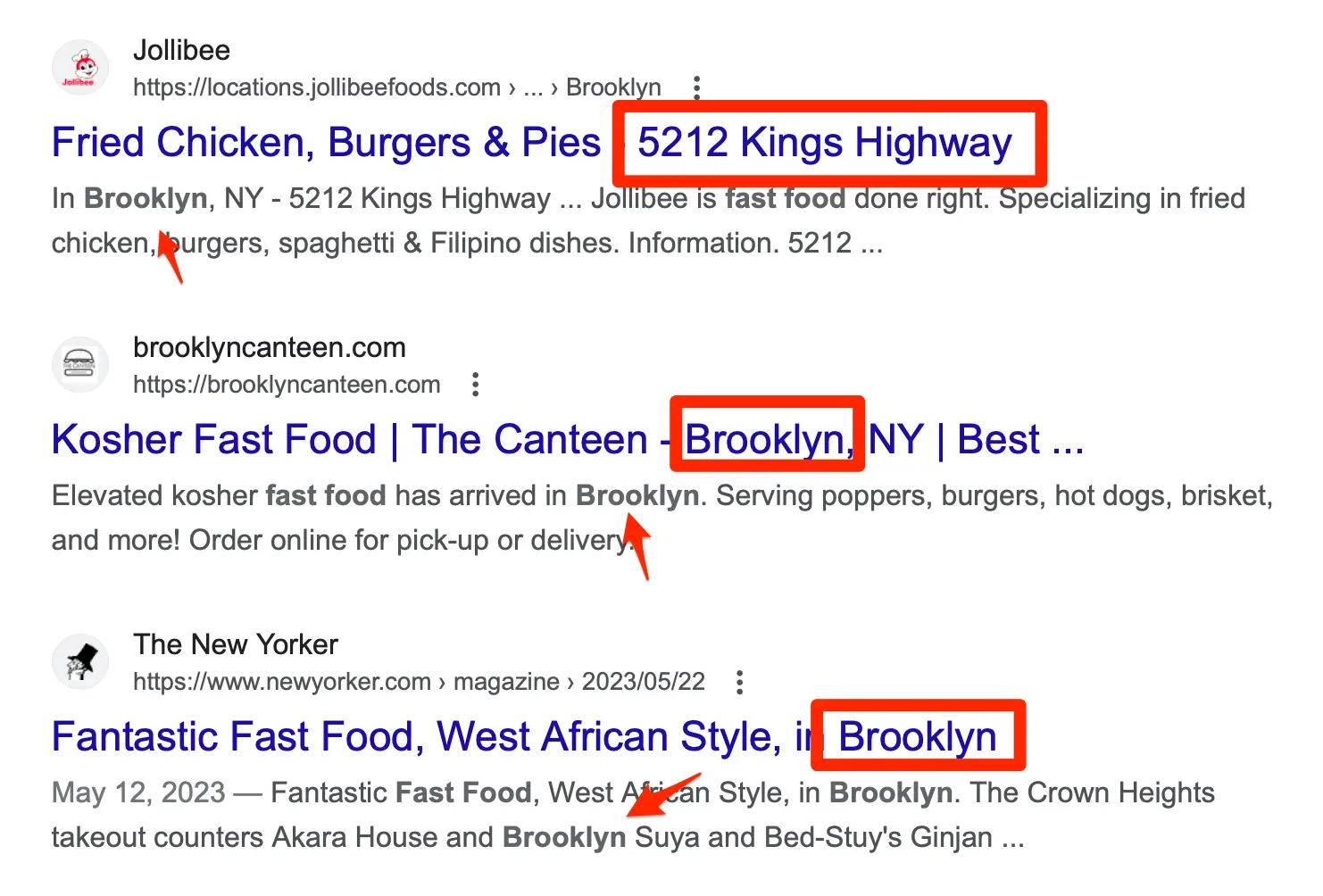
7. Localize Page URLs
Regarding the page URLs, you must ensure that you have SEO-friendly URLs that indicate the location (where applicable).
For example, if you have a business selling ‘second-hand cars in Wisconsin’ and a page for Saloon cars, your local SEO-optimized URL could be https://www.example.com/saloon-cars-wisconsin.
8. Publish Related Local Content
Publishing content related to your local area or niche, such as local events, news, and industry-related updates, is essential for a successful local SEO strategy.
It can enhance your visibility for related searches. In addition, engaging with your local audience through helpful content builds trust and positions your business as an authority in your local niche.
9. Get Listed in Local Business Directories
Besides Google Business, registering your business with other high-quality directories can help you get more links and visibility. The best options are:
Bing Places for Business - Bing Places for Business is free, easy to complete, and another way to verify your business information online. Do not forget to link to your Bing profile from your Google Business page (and vice versa).
Yelp for Business Owners - It’s free, easy to set up, and trusted by Google. All you have to do is go to Yelp for business and claim your listing.
Foursquare for Business - Foursquare for Business is another directory for enforcing local SEO efforts. With more than 60 million registered users and the growing use of mobile, it is worth taking the time and effort to maintain your business listing with them.
In addition, you can search for niche-specific or local directories and claim your listing.
10. Optimize Your Social Media Business Pages
Social media networks like Facebook have special features for local businesses that you can easily use.
Create a Local business page on Facebook - Facebook has a special category for local businesses. When you create a Facebook Business Page and choose the category ‘local business’, Facebook will verify your address and business details.
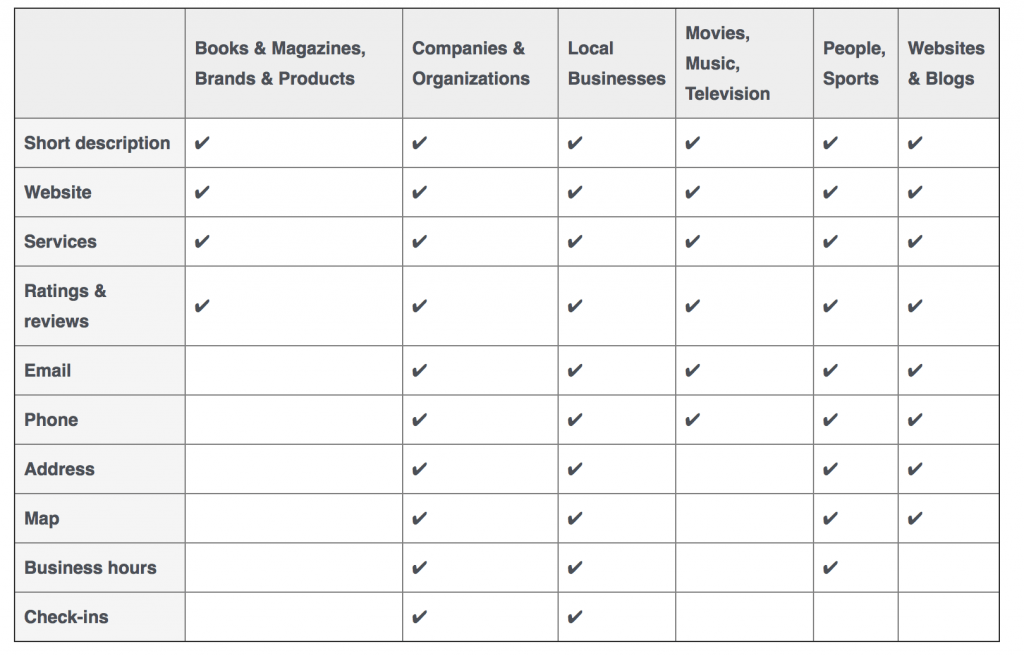
When this is done successfully, they will add a grey checkmark next to your logo, indicating that your contact details are verified. You can then add your business hours, map, and other information about your business.
Create business pages on Twitter, Pinterest, YouTube, and other social networks. These networks are great for getting people in your area to follow you since all social channels can suggest followers based on your business's location/address information.
11. Manage Your Online Reputation
Your online reputation summarizes how people perceive your business on various platforms. Things like customer reviews and ratings create a reputation for your business. Your online reputation directly influences your Local SEO, as search engines aim to provide users with the most trustworthy and relevant businesses.
What you can do to manage your reputation is to:
- Encourage satisfied customers to leave reviews on your Google Business Profile and other relevant platforms.
- Respond promptly and professionally to positive and negative feedback.
- Use a social monitoring tool to track mentions of your brand and engage with your audience, addressing their concerns and needs.
- You can ask your customers to leave a review on their favorite platform either by giving them incentives, i.e., 5% on their next purchase, or by sending them reminders by email.
12. Pursue Brand Mentions From Local Press
Any linked mentions (backlinks) you can get from trusted websites in the same city as your business is a strong signal for your Local SEO.
For example, you can get a link from a local (online) newspaper or a magazine related to your niche.
Even mentions of your brand without a link (unlinked mentions) are helpful since search engines consider them.
13. Add a Google Map To Contact Us Page
It’s very easy to add a Google map of your business to the Contact Us page, which is another strong signal of your business location for search engines.
The best way to add a map is to go to Google Maps, type in your address, and choose “Share or Embed Map” from the top left menu.
Click the Embed Map tab on the popup window and copy-paste the code to your website.
14. Perform An SEO Audit
As already mentioned above, traditional SEO still matters, so it is best to perform an SEO audit of your website to ensure compliance with the best standards and practices.
You can review my SEO Audit Checklist to get an idea of the most important SEO factors to focus on.
15. Target Local Keywords With Blogging
How can a blog help local SEO? You can post high-quality content regularly and do location-aware internal linking.
For example, you can link to your services pages from a blog post using the anchor text ‘financial services in Texas’.
This alone will not do much, but it is another small step in your optimization process.
Also, you can use the blog to target ‘local keywords’ in the title and content of the blog posts.
Learn More About Local SEO
To learn more about Local SEO, follow these resources:
